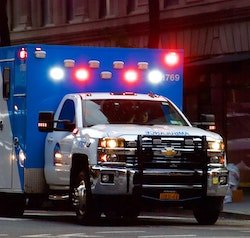Remembering My Father’s Death, And the Need for Advanced Directives
by Kris Kington-Barker
The past seven months I have been largely sheltering at home. Like many, I have taken in more than my share of visuals of the devastating toll of COVID-19 on the world. Especially now, with the number of cases rising again across the country, I feel grateful that my mom and dad are no longer alive to face the fear and isolation of this scary illness. I imagine what it would have been like if they had been stricken by the novel coronavirus, separated from loved ones in an ICU and struggling to live. No one to speak for them, express end of life care wishes to healthcare workers or to be in their presence loving them when they took their final breaths.
The current pandemic illustrates how vital an advance care directive is when a designated healthcare agent cannot be physically present to speak for a patient’s end of life care wishes. Unfortunately, only one in three US adults has completed one.
These thoughts carry me back to the end of my father’s life, which occurred over a period of nine days in 2009. The year before, he had bladder cancer and survived after bladder removal. But he also had severe emphysema resulting from smoking two or more packs of cigarettes a day. One Friday night in April of 2009 he developed a “cold” that became more severe by Sunday morning. Both my parents insisted on him seeing his own physician Monday morning, as a trip to the ER was “an absolute waste of time,” per my mother. “They don’t know him; we will just sit around and wait, and they won’t do anything his own doctor won’t tomorrow morning,” she said. That would have been sound logic; except I could hear my father struggling to breathe in the next room.
 At 5:00 am Monday morning I got the call: “Your father needs to go to the ER, please come take him right away.” I called for an ambulance and sped to the emergency room to meet it. Dad was alert and able to talk to the ER physician when he was brought out of the ambulance. He had no written advanced care directive, no POLST (Physician Orders for Life Sustaining Treatment). But he had my mother to speak for him, if that should become necessary. Both my parents were in their mid-80s and had been married for 59 years. They were inseparable.
At 5:00 am Monday morning I got the call: “Your father needs to go to the ER, please come take him right away.” I called for an ambulance and sped to the emergency room to meet it. Dad was alert and able to talk to the ER physician when he was brought out of the ambulance. He had no written advanced care directive, no POLST (Physician Orders for Life Sustaining Treatment). But he had my mother to speak for him, if that should become necessary. Both my parents were in their mid-80s and had been married for 59 years. They were inseparable.
My mother was an avid health magazine reader and had a dispensary of homeopathic meds—treatments and vitamins that she was convinced would keep them both alive for as long as they wanted. Attempts to discuss their end of life care wishes were batted away by her. “We talk about these things with one another,” she would respond, “and know exactly what each other wants.” Conversation over. My father had at least told me, on a drive one day at the end of 2008, that he was “done with treatments, surgeries and doctors.”
On entry to the ER, my dad’s oxygen level was dangerously low. The ER physician came in to tell him it was quite possible he would be unable to breathe on his own soon, and asked should that happen, would he want to be placed on a ventilator. My father shook his head “no.” For comfort the physician offered C-Pap, a method of delivering oxygen with a different mask, which would be more forceful than the oxygen mask he currently had on. My father agreed.
When his lab work came back it was clear he was septic, a potentially life-threatening condition caused by the body’s response to infection. My father was quickly taken to the ICU, where he was examined immediately by the ICU hospitalist behind a shut door.
When the door reopened and all the staff, except for one nurse, left the room my father was unconscious and on a ventilator. I felt like storming the hospital in search of the hospitalist and demanding that she immediately remove the ventilator. But I couldn’t, because I had to continue holding on to my mother to keep her upright.
Over the next eight days my father’s body went through one system failure after another. His heart was irregular, blood pressure too high and then too low. His blood chemistry was a mess. His kidneys began to shut down, his lungs were becoming opaque as they filled with fluid. All the while he was pumped full of multiple drugs, more machines were added—and the ventilator just kept going.
Mom would visit multiple times each day and would always be reassured by staff that something was “looking a little better” or that “he could respond” to a drug or new treatment that had been added. These hopeful expressions played into my mom’s certainty that dad would “beat this.” On day three mom showed up with my dad’s house coat and slippers to wear when he “gets to go home.” I left my parents alone for a little while and hid in the public bathroom for my emotional breakdown.
On day five, the hospitalist who placed my father on the ventilator, finished her week’s work and a new hospitalist came on. When he rounded, we reviewed my father’s chart together. I asked what the chances were that he could return to his life as he knew it prior to entering the hospital. The answer was “none.” If all went “right,” my father might survive and eventually be taken off the ventilator. It would be likely that he would then spend the rest of his life in a nursing home. Even if he could one day go home, it would be with greatly diminished capacity.
For the next three days the physician continued to keep me updated and had gentle conversations with my mother to edge her toward the same understanding. But he was never able to convince her that my father was not going to walk out of the hospital and return to how his life was before.
On day eight, with my dad still in a coma and the odds of recovery that much poorer, the physician joined us for a family meeting. My brother and daughter had come in from out of town and had a chance to spend time with dad. The physician was open, kind, honest, and gentle in presenting dad’s situation. Sadly, because he hadn’t completed a POLST or Advance Health Care Directive, the only person who could make the final decision whether or not to remove life support was my mother, who just couldn’t accept the reality of what was happening.
My mother asked the same question again and again: “How can you be sure he isn’t going to get better and be just as he was before the illness?” And, she made statements like, “I don’t care if he never gets out of a bed again. I’ll take him home and take care of him.” It was heartbreaking.
Finally, after more attempts to arrive at a decision about removing the ventilator, my mother turned to me and said: “What  would you do?” I recounted the comment my dad had made about being done with treatments and doctors. “I don’t believe dad would want to continue living with very diminished quality,” I said. My mother’s response was: “You’re just making that up!” At that point the physician suggested he could lighten the sedation for dad so he might become conscious enough to say what he wanted. But, he added, it would need to be quick, because dad required the ventilator to breathe and might also find it very uncomfortable when more alert. We agreed to try.
would you do?” I recounted the comment my dad had made about being done with treatments and doctors. “I don’t believe dad would want to continue living with very diminished quality,” I said. My mother’s response was: “You’re just making that up!” At that point the physician suggested he could lighten the sedation for dad so he might become conscious enough to say what he wanted. But, he added, it would need to be quick, because dad required the ventilator to breathe and might also find it very uncomfortable when more alert. We agreed to try.
The short acting sedative he was getting was reduced. Soon after that dad’s eyes flew open. I explained that we were trying to make a decision for him and didn’t know if it was the right one. Did he want to be taken off the ventilator, even if it meant he would die. He slowly blinked once. Everyone in the room saw it. Except my mother, who if she did, hadn’t registered it due to her state of pain about the decision she was being asked to make. After dad was comfortable again, we met outside his room. Mom looked at me and asked: “Is this what you would do?” I nodded yes.
My father was taken off life support and the myriad of machines removed. We could finally all get close to him without some tube or medical contraption in the way. He never regained consciousness, dying 12 hours later. We were all there except my mom, who couldn’t bear to be.
The lack of written direction in my father’s words and signed by him left my mother and I in a place we never recovered from together. When she was consumed by her pain and grief, she blamed me for “killing” my father and expressed a sureness he would have survived had we not intervened. There were times when I questioned: “Did I really see his eyes blink?” “Is that what he meant?” “Did I get it wrong?”
My mother carried her intense anger and grief for the next six years until she had a major stroke. Fortunately, the year before, we had deeper conversations about her fears of death. She knew she would likely have a stroke; her bigger fear was being paralyzed or unable to care for herself. We completed her advance healthcare directive and her POLST and had the POLST signed by her physician. If she were to have a massive stroke, she wanted no treatment, only comfort measures. Mom died four days later, on comfort care. I spent those last days in the recliner by her bedside. I did not have a single doubt she received the end of life care she wanted.
As end of life care doulas, we need to educate people about the importance of making sure their wishes are thought out, expressed, and documented. However, the place to start is with ourselves. Have you completed or updated your advance healthcare directive?
